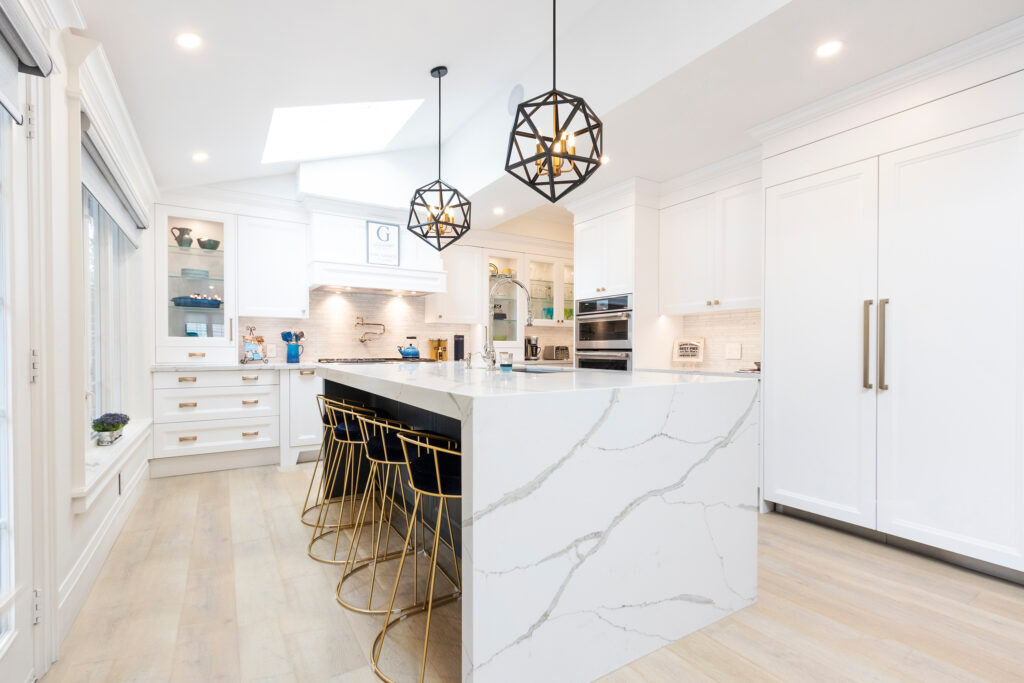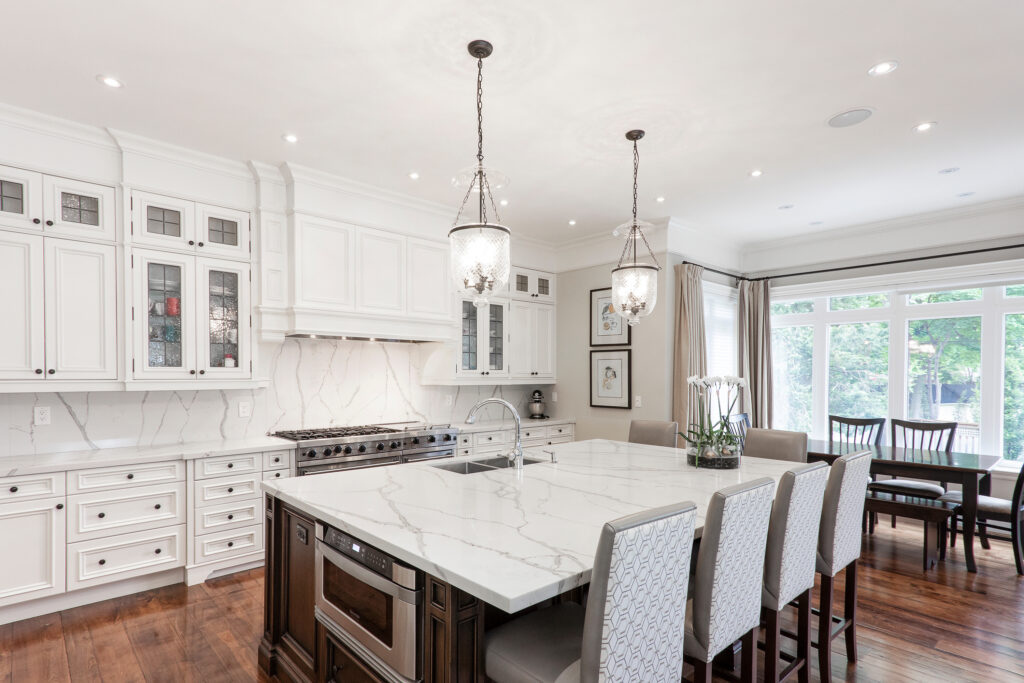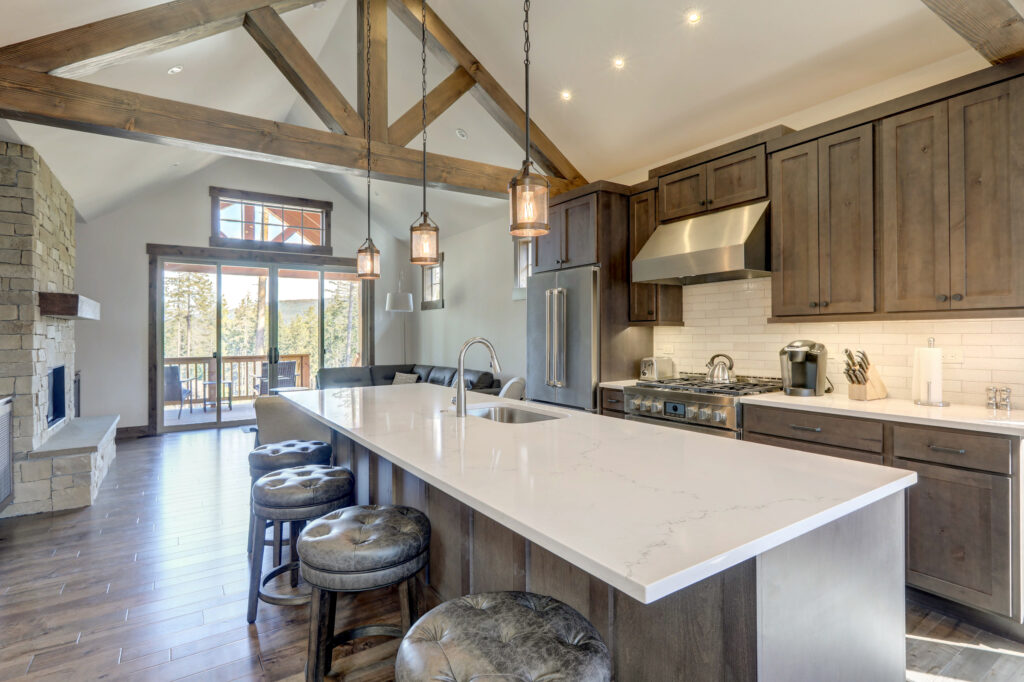Bathroom countertops are a key part of any bathroom’s look and function. They need to be tough, water-resistant, and easy to clean.
We’ve found that the right countertop can make a big difference in how a bathroom feels and works.

There are many options for bathroom countertops. Some popular choices are granite, quartz, and solid surface materials. Each has its own pros and cons.
The best choice depends on your budget, style, and how you use your bathroom.
When picking a countertop, think about how it fits with your overall bathroom design. A good countertop can tie the whole room together.
It can also add value to your home if you’re planning a bathroom renovation.
We’ll explore some top countertop options and how to choose the best one for your needs.
Types of Bathroom Countertops

Bathroom countertops come in many materials. Each type has its own look and features. Let’s explore some popular options for bathroom counters.
Stone Countertops
Stone countertops are a top choice for bathrooms. We love granite for its durability and unique patterns. It resists scratches and heat well.
Marble offers elegance with its veining, but needs more care.
Quartz countertops blend beauty and strength. They’re made from crushed stone and resins. This makes them very tough and low-maintenance. Quartz comes in many colors and patterns.
Engineered stone is another great option. It’s made to look like natural stone but is more consistent. Cultured marble is a type of engineered stone that’s popular in bathrooms.
Laminate Countertops
Laminate countertops are budget-friendly and versatile. They’re made from layers of plastic bonded to particleboard. We can find laminate in many colors and patterns.
These counters are easy to clean and resist stains. They’re lighter than stone, which makes installation easier.
Laminate can mimic the look of more expensive materials like stone or wood.
One drawback is that laminate can chip or scratch. It’s not as heat-resistant as stone. But for the price, it’s a solid choice for many bathrooms.
Concrete Countertops
Concrete countertops offer a unique, modern look. We can shape and color them in many ways. This makes each concrete counter one-of-a-kind.
These counters are very strong and durable. They resist heat and scratches well. Concrete can be sealed to prevent staining and make cleaning easier.
One thing to note is that concrete counters are heavy. They may need extra support.
They can also develop small cracks over time. But many people love the industrial chic style they bring to a bathroom.
Wood Countertops
Wood countertops add warmth and natural beauty to bathrooms. We often see teak or bamboo used for their water-resistant qualities. Wood can be sealed to protect against moisture.
These counters are softer than stone or concrete. They can dent or scratch more easily.
But many people like how wood ages and develops character over time.
Wood counters need regular maintenance to keep them looking good. They should be oiled or sealed periodically. Despite the extra care, wood counters create a cozy, spa-like feel in bathrooms.
Glass Bathroom Countertops
Glass countertops make a bold statement in bathrooms. We can get them in clear, frosted, or colored glass. Some have texture or embedded materials for added interest.
These counters are non-porous and easy to clean. They resist stains and bacteria well.
Glass counters can be backlit for a dramatic effect.
One downside is that glass can chip or crack if hit hard. It also shows water spots and fingerprints easily. But for a sleek, modern look, glass counters are hard to beat.
Selecting the Right Countertop Material
Choosing the best countertop for your bathroom involves weighing several key factors. We’ll explore the durability, looks, and upkeep of different materials to help you make an informed choice.
Considering Durability
Bathroom countertops need to stand up to daily use and moisture. Granite and quartz are top picks for their strength. These natural stones resist scratches, heat, and stains.
Solid surface countertops, made from acrylic and resin, are also durable and easy to repair if damaged.
Marble is beautiful but softer than granite. It can scratch and stain more easily.
Laminate is budget-friendly but less durable. It can chip or peel over time, especially with water exposure.
Concrete offers a unique, sturdy option. It’s tough but needs sealing to prevent stains.
Tile countertops are strong but have grout lines that can collect dirt and mold if not sealed properly.
Assessing Aesthetics
The look of your countertop sets the tone for your bathroom. Granite comes in many colors and patterns, adding natural beauty.
Marble’s classic veining creates a luxurious feel. Quartz offers consistent colors and patterns, perfect for modern designs.
Laminate countertops come in countless designs, including some that mimic stone. Solid surface materials can be molded into seamless shapes with integrated sinks.
Concrete can be tinted and textured for a custom look.
Tile gives you endless design options. Mix colors, sizes, and patterns to create a unique surface.
For a sleek look, large-format tiles with minimal grout lines work well.
Evaluating Maintenance and Care
Some countertops need more care than others. Granite and quartz are low-maintenance. They need occasional sealing but resist stains and bacteria.
Marble requires more upkeep. It needs regular sealing and quick cleanup of spills to prevent staining.
Laminate is easy to clean but can’t be repaired if damaged. Solid surface countertops are simple to maintain and can be buffed to remove minor scratches.
Concrete needs regular sealing to stay stain-resistant.
Tile countertops need grout cleaning to prevent mold and mildew. Choosing a dark grout color can help hide stains. Epoxy grout offers better stain resistance than standard grout.
Installation and Cost Factors
Setting up new bathroom countertops takes planning. The process and price depend on the material you choose. Let’s look at how to install countertops and compare costs.
Installation Process
We start by measuring the space and making a template. This ensures a perfect fit.
Next, we remove the old countertop and prepare the base. For stone countertops, we need special tools to cut and shape the material.
Laminate is easier to work with and can often be a DIY project. Wood needs sealing to protect it from water. Tile requires careful planning for grout lines.
Professional installation is best for heavy materials like granite. They have the right tools and know-how to handle these tricky jobs.
Integration with Bathroom Design
Bathroom countertops play a key role in tying together the overall look of a bathroom. They connect various elements and set the tone for the space’s style and functionality.
Matching Countertops to Vanities
We recommend choosing countertops that complement your vanity style. For traditional wooden vanities, granite or marble countertops add elegance. Glass countertops pair well with modern, sleek vanities.
Color coordination is crucial. A white marble countertop looks stunning on a dark wood vanity. For light-colored vanities, we suggest darker granite to create contrast.
Think about the vanity’s shape too. Curved vanities often look best with rounded countertop edges. Square vanities match well with straight-edged countertops.
Incorporating Vessel Sinks
Vessel sinks sit on top of the countertop, creating a striking focal point. We find glass countertops work beautifully with vessel sinks, allowing the sink to stand out.
When using vessel sinks, the countertop height needs adjustment. We typically lower it by a few inches to keep the sink at a comfortable level.
Granite and marble countertops provide a solid base for heavier vessel sinks. Their durability ensures long-lasting support for these statement pieces.
Design Coordination with Fixtures and Accessories
Countertops should harmonize with other bathroom fixtures.
We often match faucet finishes to countertop colors. Brushed nickel faucets look great with gray granite, while bronze complements warm-toned marble.
Accessories like soap dispensers and toothbrush holders can echo countertop materials.
Glass accessories pair well with glass countertops, creating a cohesive look.
Lighting plays a big role too.
We find under-cabinet lights can highlight the beauty of granite or marble countertops. For glass countertops, overhead lighting creates stunning reflections.



